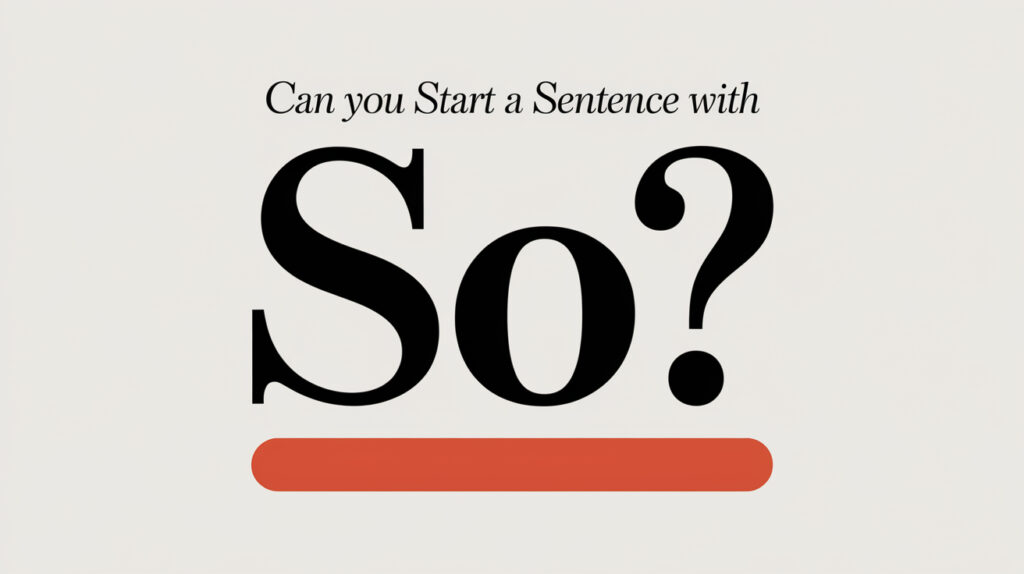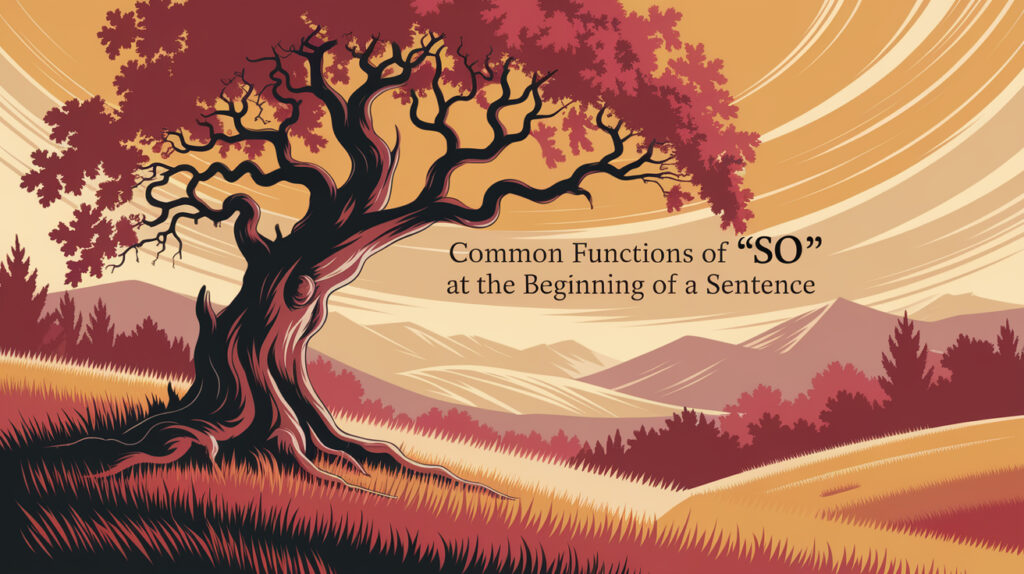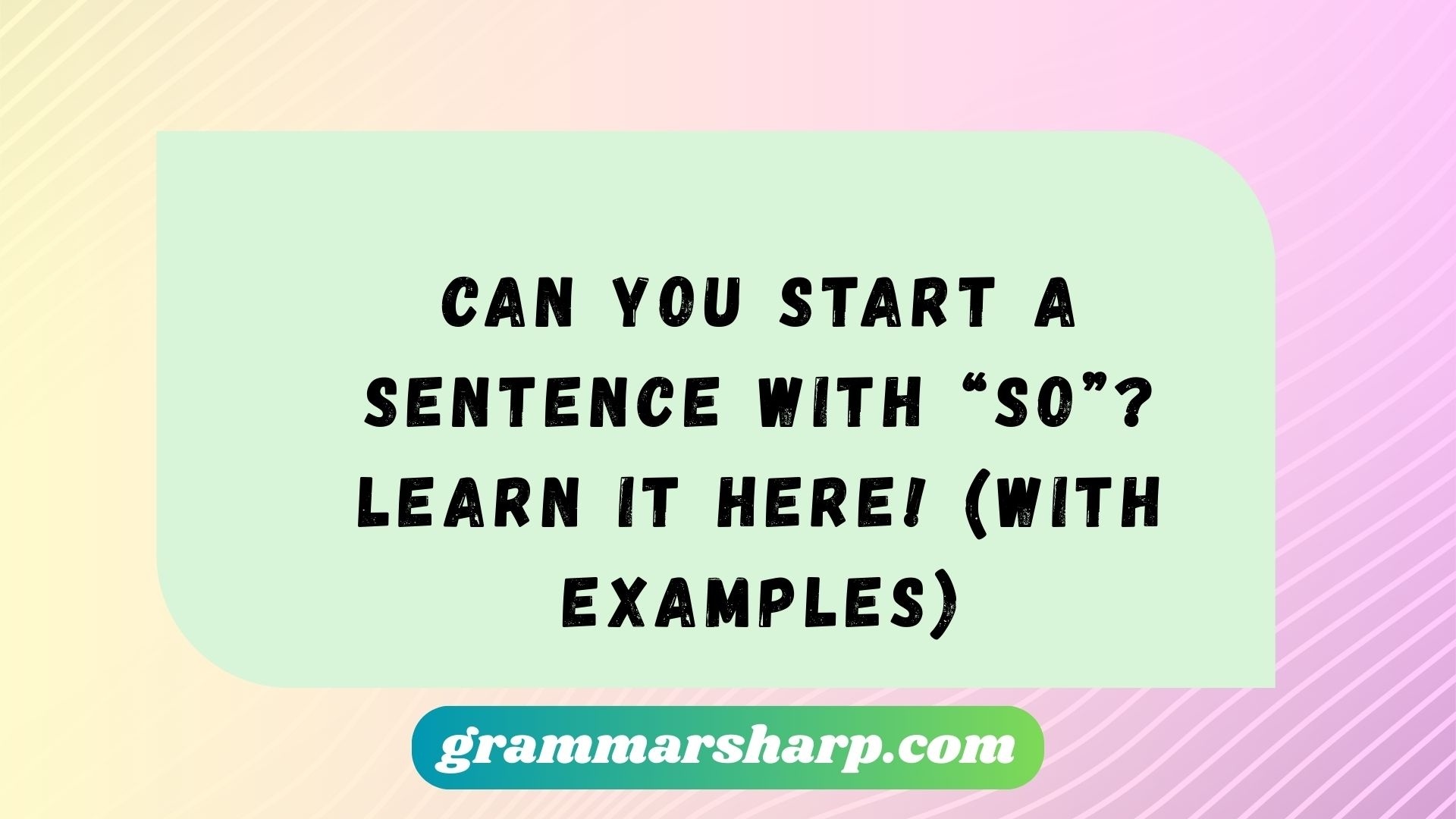Language is full of myths. One of the most persistent? The idea that you can’t start a sentence with the word so. If you’ve ever been told by a teacher, a colleague, or even a grammar stickler that beginning with so is “wrong,” you’re not alone. But here’s the truth: starting with so isn’t a mistake—it’s a stylistic choice.
When you look at everyday conversations, professional emails, news articles, and even academic papers, so often slips into the opening position. Writers and speakers alike use it to connect ideas, create flow, or soften transitions. Far from being sloppy, it’s a natural feature of how English works.
But why does this debate exist? The confusion comes from how so functions. It can serve as a conjunction, an adverb, or a discourse marker. Because it wears many hats, some people assume it doesn’t belong at the start. Yet linguists, editors, and style experts confirm that it’s both acceptable and widely used.
In this article, you’ll discover everything you need to know about starting sentences with so. We’ll cover its meaning, history, real-world usage, examples, pitfalls, and even alternatives. Whether you’re polishing an essay, drafting a business proposal, or just curious about conversational English, this guide will help you use so effectively and confidently.
By the end, you’ll know not only whether you can start a sentence with so (spoiler: you can) but also how to do it well.
What Does “So” Mean?
The word so may look simple, but it’s surprisingly versatile.
- As a conjunction: so links cause and effect.
- Example: It was raining, so we stayed indoors.
- As an adverb: so intensifies meaning.
- Example: The movie was so good I watched it twice.
- As a discourse marker: so helps organize conversation or writing.
- Example: So, what do you think of the idea?
Linguists trace so back to Old English, where it meant “in this way” or “thus.” Over centuries, it expanded into one of the most frequently used transition words. Today, you’ll find it everywhere: from Shakespeare’s plays to modern-day podcasts.
Think of so as a Swiss Army knife of English—it can summarize, connect, intensify, or signal a shift depending on context.
Can You Start a Sentence With “So”?

The short answer: yes, you can start a sentence with so.
There’s nothing grammatically incorrect about it. Many respected publications, including The New York Times and The Guardian, open sentences with so. Even academic papers and business reports sometimes rely on it for clarity and flow.
So why the resistance? Often it comes from outdated school rules. Teachers may have discouraged it because students tended to overuse so or use it in place of more precise transitions. Instead of being about grammar, the warning was about style.
Modern usage guides confirm it’s perfectly valid. The Merriam-Webster Dictionary notes that beginning with so is “a natural and frequent use.” Even The Chicago Manual of Style acknowledges its legitimacy, especially in informal and semi-formal writing.
Formal vs. Informal Usage
When deciding whether to begin with so, context matters.
In informal settings:
- Perfectly fine in conversations, blogs, social media posts, and personal emails.
- Adds a friendly, approachable tone.
- Example: So, you finally finished that book!
In formal settings:
- Acceptable but use sparingly.
- Better reserved for sections that summarize or draw conclusions.
- Example: So, the data suggests that customer loyalty is improving.
In very formal/academic writing
- Often replaced with more precise connectors like therefore, thus, or consequently.
- Example: Therefore, the hypothesis can be confirmed.
Here’s a quick comparison:
| Setting | Recommended Use of So | Example |
| Casual Conversation | Common and natural | So, what’s new with you? |
| Business Email | Use with moderation | So, I suggest we review the numbers again. |
| Academic Paper | Rare, better to replace | Therefore, the study indicates a strong correlation. |
Common Functions of “So” at the Beginning of a Sentence

Starting with so isn’t random. It serves clear purposes:
- Introduce a result or consequence
- So, the project had to be delayed.
- Summarize or conclude
- So, in the end, the campaign was successful.
- Shift or connect ideas
- So, let’s move on to the next topic.
- Grab attention
- So, you think grammar rules are boring? Think again.
- Open a story or explanation
- So, there I was, standing in the rain without an umbrella.
Notice how so guides readers smoothly from one thought to the next.
Examples of Correct Usage
Let’s break down real-world examples.
Simple examples:
- So, are you ready to start?
- So, the meeting ended earlier than expected.
Formal examples
- So, the research points toward a sustainable solution.
- So, it becomes evident that communication plays a vital role.
Comparison with alternatives:
| Sentence with So | Alternative | Tone |
| So, we agreed on a new plan. | Therefore, we agreed on a new plan. | More formal |
| So, what do we do next? | Thus, what do we do next? | Stilted in conversation |
| So, she decided to leave. | Consequently, she decided to leave. | Academic or technical |
When NOT to Start a Sentence With “So”
Although it’s correct, so doesn’t fit every context.
Avoid starting with so when:
- You overuse it: Repeating so at the start of every other sentence looks lazy.
- You’re writing highly formal text: Legal contracts, scientific journals, and technical manuals call for precise alternatives.
- It creates sentence fragments: So happy! isn’t a complete sentence.
Bad example: So, um, like, I don’t know what to say.
Better version: I’m not sure what to say
Think of so as seasoning—sprinkle it in, don’t drown the dish with it.
Alternatives to Starting With “So”
When you want variety or formality, try alternatives:
- Therefore
- Thus
- Hence
- Accordingly
- As a result
Comparison table:
| Word | Usage Example | Tone |
| Therefore | Therefore, we need to adjust our strategy. | Formal, academic |
| Thus | Thus, the findings support the theory. | Formal, slightly old-fashioned |
| Hence | Hence, the company restructured its departments. | Formal, elegant |
| Accordingly | Accordingly, the budget was revised. | Business, professional |
| As a result | As a result, sales improved. | Neutral, flexible |
Tips for Using “So” Naturally in Writing
Want to use so effectively? Keep these tips in mind:
- Read aloud: If the sentence flows naturally, it works.
- Mix transitions: Don’t rely on so alone.
- Match tone to audience: Use so in friendly writing, therefore in formal writing.
- Keep it intentional: Avoid filler; make sure so adds meaning.
- Vary sentence structure: Blend short, punchy sentences with longer, detailed ones.
Conclusion
So, can you start a sentence with so? Absolutely. It’s not only grammatically correct but also a powerful way to create flow, highlight results, and connect ideas. The key lies in balance. Use it naturally, avoid overuse, and know when to reach for a more formal alternative.
Language evolves with use. Instead of fearing so, embrace it as one of the many tools you can use to make your writing and speaking more engaging.
FAQs
Is it unprofessional to start with so?
No, but in very formal writing, it’s better to use therefore or thus.
Can you start an essay with so?
Yes, though it’s more common in creative or conversational essays than in academic ones.
What’s the difference between so and therefore?
So feels casual and conversational. Therefore signals formality and precision.
Why do people use so often in speech?
It acts as a discourse marker, helping organize thoughts and transitions.
Can so stand alone as a sentence?
In casual speech, yes. For example: “So?” But in writing, it usually needs more context.

